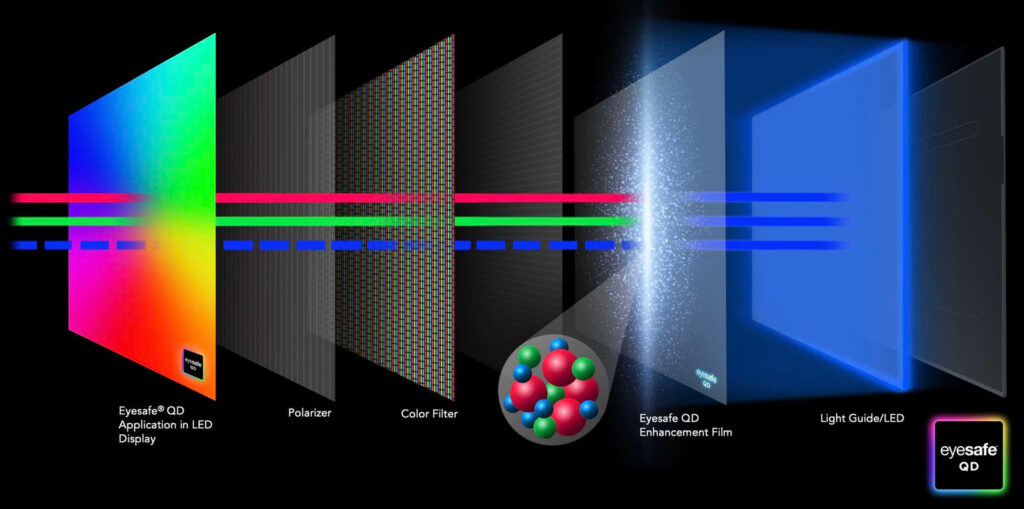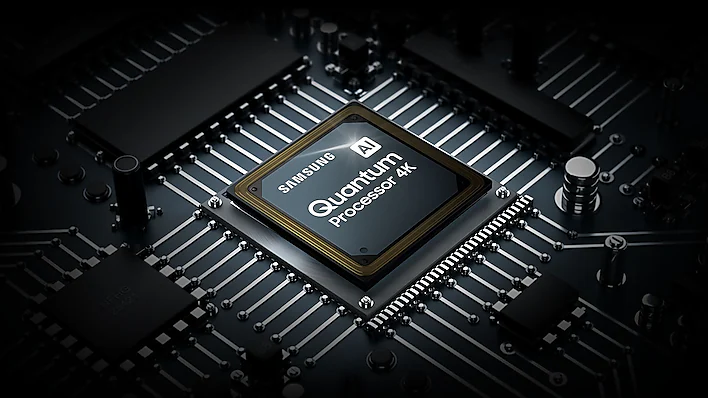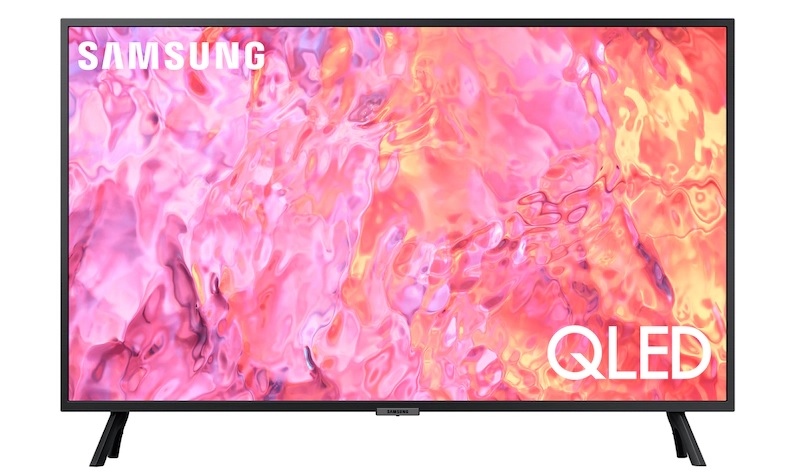The demand for smaller 4K TVs has surged in recent years due to their versatility and space-saving benefits. These TVs offer the stunning visual clarity of 4K resolution without the need for a massive screen.
Whether you’re looking to optimize your bedroom, kitchen, or office space, a compact 4K TV could be the perfect addition.
Why Choose Smallest 4K TV?
Space Efficiency:
Smaller 4K TVs are perfect for rooms with limited space. They fit seamlessly on countertops, shelves, or wall mounts, allowing you to maximize your living area.
Stunning Visuals:
Don’t underestimate their size; these TVs deliver crisp 4K resolution, vibrant colors, and sharp details for an immersive viewing experience.
Versatility:
Smallest 4K TVs aren’t limited to just watching TV shows and movies. They can serve as monitors for your PC or gaming console, enhancing your gaming and productivity.
Energy Efficiency:
Smaller screens typically consume less power, helping you save on electricity bills without compromising on quality.
Key Considerations Before Buying
Before making a purchase, consider these essential factors:
Screen Size:
Determine the ideal screen size for your space. Smallest 4K TVs come in various sizes, so choose one that complements your room’s layout.
Display Technology:
Explore different display technologies like OLED, QLED, or LED. Each has its unique advantages in terms of color accuracy and contrast.
- LCD (Liquid Crystal Display):
- Common and affordable technology.
- Offers good picture quality, especially in well-lit rooms.
- May have issues with viewing angles and contrast in some cases.
- LED (Light Emitting Diode):
- Essentially an LCD TV with LED backlighting.
- Improved energy efficiency and thinner design compared to traditional LCDs.
- Picture quality varies depending on the quality of the LED backlighting.
- OLED (Organic Light Emitting Diode):
- Known for exceptional contrast ratios and true black levels.
- Each pixel emits its light, allowing for individual pixel control.
- Thinner and more flexible displays are possible with OLED technology.
- Generally more expensive than LCD/LED TVs.
- QLED (Quantum Dot LED):
- Uses quantum dots to enhance color and brightness.
- Offers vibrant and accurate colors with high brightness levels.
- Generally competes with OLED in terms of picture quality.
- Available in a variety of price ranges.
- Plasma (Less Common):
- Known for deep blacks and excellent color accuracy.
- Heavier and less energy-efficient compared to LED/LCD and OLED.
- Not as widely available as other technologies.
- MicroLED (Emerging):
- Uses micro-sized LEDs to create a self-emissive display.
- Promises exceptional picture quality and durability.
- Currently limited availability and high cost.
- Mini-LED (Emerging):
- Utilizes smaller LED backlighting zones for improved contrast.
- Offers better picture quality compared to traditional LED/LCD.
- Becoming more popular in high-end TVs.

Smart Features:
Opt for a TV with smart capabilities. Streaming services, voice control, and app compatibility can enhance your entertainment experience.
- Streaming Services
- Voice Control
- App Compatibility
- Screen Mirroring
- Web Browsing
- Multi-Device Connectivity
- Home Automation
- Frequent Updates
- User-Friendly Interface

Connectivity:
Ensure the TV has the ports you need, such as HDMI, USB, and audio outputs, to connect your devices seamlessly.
- HDMI Ports: Look for an adequate number of HDMI ports, preferably HDMI 2.0 or higher for 4K support, to connect gaming consoles, Blu-ray players, and soundbars.
- USB Ports: USB ports allow you to connect external storage devices, like flash drives or hard drives, for media playback or software updates.
- Audio Outputs: Ensure the TV has audio output options that match your audio setup, whether it’s a soundbar, home theater system, or headphones.
- Ethernet Port: While most modern TVs support Wi-Fi, having an Ethernet port can provide a more stable and faster internet connection.
- Wi-Fi Capability: Built-in Wi-Fi allows you to connect your TV to your home network for streaming content and accessing online services.
- Bluetooth Connectivity: Bluetooth enables wireless connections to compatible devices like headphones, speakers, and gaming controllers.
- Compatibility with External Devices: Check if the TV supports compatibility with external devices like gaming consoles, streaming devices, or PCs.
- Cable Management Options: Look for features that help manage and hide cables, keeping your entertainment setup clean and organized.
- Expandability Options: Consider whether the TV allows for future expandability, such as adding external devices or upgrading components like sound systems or gaming accessories.
Budget:
Set a realistic budget. Smallest 4K TVs are available in various price ranges, so you’re likely to find one that fits your financial plan.
The smallest 4K TVs typically start at 43 inches. This is because the benefits of 4K resolution become less noticeable on smaller screens due to the pixel density. However, there are a few models available in smaller sizes, such as the Samsung Q60A, which is a 32-inch 4K TV
Smallest 4k TV
32″ Class QLED 4K Q60C (Samsung)
Certainly, here are the specifications you provided in a table format:
| Category | Specification |
|---|---|
| Series | Series 6 |
| Design | AirSlim |
| Stand Type | SLIM FEET |
| Bezel Type | VNB |
| Slim Type | Slim look |
| Stand Color | TITAN GRAY |
| Front Color | TITAN GRAY |
| Video | |
| Color | 100% Color Volume |
| HDR (High-Dynamic Range) | Quantum HDR |
| Film Mode | Yes |
| HLG (Hybrid Log Gamma) | Yes |
| Contrast | Mega Contrast |
| Ultimate UHD Dimming | Supreme UHD Dimming |
| Contrast Enhancer | Yes |
| HDR10+ Support | Yes |
| Picture Engine | Quantum Processor Lite 4K |
| Motion Technology | Motion Xcelerator |
| One Billion Color | Yes |
| Picture Clarity | Yes |
| Smart Calibration | Basic |
| Filmmaker Mode | Yes |
| Brightness/Color Detection | Brightness Detection |
| Audio | |
| Sound Output (RMS) | 20W |
| Speaker Type | 2CH |
| Multiroom Link | Yes |
| Q-Symphony | Yes |
| Bluetooth Audio | Yes |
| Dual Audio support (Bluetooth) | Yes |
| Dolby Decoder | MS12 2ch |
| Object Tracking Sound | OTS Lite |
| Adaptive Sound | Adaptive Sound |
| Buds Auto switch | Yes |
| Features | |
| Caption (Subtitle) | Yes |
| Embedded POP | Yes |
| EPG | Yes |
| IP Control | Yes |
| OSD Language | English, Spanish, French |
| V-Chip | Yes |
| MBR Support | Yes |
| ConnectShare™ | Yes |
| Power | |
| Power Supply (V) | AC110-120V 50/60Hz |
| Power Consumption (Max) (W) | 95 |
| Power Consumption (Stand-by) (W) | 0.5 |
| Power Consumption (Typical) | 46 |
| System | |
| Digital Broadcasting | ATSC/ClearQAM |
| Analog Tuner | Yes |
| DTV Sound System | Dolby |
| Accessory | |
| Remote Controller Model | TM2360E |
| VESA Wall Mount Support | Yes |
| Zigbee / Thread Module | Built-in |
| SlimFit Cam Support | Support |
| Remote Controller Code No | BN59-01432A |
| Key Features | |
| Quantum HDR | Yes |
| Loading Quantity | 40ft HC: 968 / 53ft: 1710 |
| VESA Standard | Screw Size: M4 / Screw depth: 19-22 / VESA Spec: 100×100 |
| Eco | |
| Eco Sensor | Yes |
| Auto Power Saving | Yes |
| Auto Power Off | Yes |
| Display | |
| Inch | 32 |
| Resolution | 3,840 x 2,160 |
| Refresh Rate | 60Hz |
| Diagonal Screen Size (Inch) | 31.5 |
| Smart Service | |
| Operating System | Tizen™ Smart TV |
| Built-in Voice Assistant | Alexa |
| Works With AI Speaker | Alexa, Google Assistant |
| TV Plus | Yes |
| Web Browser | Yes |
| SmartThings Hub / Matter Hub / IoT-Sensor Functionality | Yes |
| Samsung Health | Yes |
| Universal Guide | Yes (US only) |
| Media Home | Yes |
| Smart Features | |
| Multi Device Experience | Mobile to TV, TV initiate mirroring, TV Sound to Mobile, Sound Mirroring, Wireless TV On |
| Video Communication | Google Meet |
| Tap View | Yes |
| Multi View | Up to 2 videos |
| Music Wall | Yes |
| Mobile Camera support | Yes |
| Easy Setup | Yes |
| App Casting | Yes |
| Workspace | Yes |
| Wireless Dex | Yes |
| Web Service | Microsoft 365 |
| Chat Together | Yes (US only) |
| NFT | Nifty Gateway, La Collection, Art Token, Savage |
| ConnecTime | Yes (US only) |
| Telemedicine | HealthTap (US Only) |
| Game Feature | |
| Auto Game Mode (ALLM) | Yes |
| HGiG | Yes |
| Gaming Hub | Yes (KR, US, CA, BR, GB, FR, DE, IT, ES) |
| Connectivity | |
| HDMI | 3 |
| HDMI Audio Return Channel | Yes |
| USB | 2 |
| Ethernet (LAN) | 1 |
| Digital Audio Out (Optical) | 1 |
| RF In (Terrestrial / Cable input / Satellite Input) | 1/1(Common Use for Terrestrial)/0 |
| Ex-Link ( RS-232C ) | w/ Dongle Only |
| WiFi | Yes (WiFi5) |
| Bluetooth | Yes (BT5.2) |
| Anynet+ (HDMI-CEC) | Yes |
| Accessibility | |
| Voice Guide | US English, Mexico Spanish, Canada French, Finnish, German, Greek, Hungarian, Italian, Norwegian, Polish, Portugal Portuguese, Romanian, Slovak |
Pros and Cons of Smallest 4K TVs
| Pros of Smallest 4K TVs | Cons of Smallest 4K TVs |
|---|---|
| Space-Saving: Ideal for small rooms or apartments. | Limited Screen Size: Not suitable for those who prefer larger screens. |
| 4K Resolution: Enjoy stunning visuals and clarity. | Limited Audio: Smaller TVs may have less robust built-in audio. |
| Energy-Efficient: Lower power consumption. | |
| Versatility: Can serve as a monitor for various devices. |
FAQs
What is the smallest 4K TV I can get?
Do you need to buy a 4K TV?
Are all 4K TVs smart TVs?
Are all 4K TVs the same quality?
What is the difference between 4K and Ultra HD?
Do all 4K TVs support High Dynamic Range (HDR)?
Can I watch regular HD content on a 4K TV?
Do I need a special HDMI cable for 4K content?
What is the ideal screen size for a 4K TV?
Is there a significant difference between OLED and QLED technology in 4K TVs?
Can I use a 4K TV as a computer monitor?
Do 4K TVs consume more power than Full HD TVs?
Conclusion
Smallest 4K TVs are the epitome of modern technology meeting compact design. They offer a range of benefits, from space efficiency to exceptional visuals. By considering your space, budget, and specific needs, you can find the perfect compact 4K TV that seamlessly blends into your lifestyle.


Absolutely impressed with your post on the smallest 4K TV! 📺✨ Your detailed insights and recommendations have truly been a game-changer for me. It’s incredible how technology continues to evolve, and your post helped me understand the latest innovations in compact entertainment. Your writing is not just informative but also engaging, making it a delightful read. Thanks for keeping us updated on the tech trends; you’re making the world of TVs smaller but better!